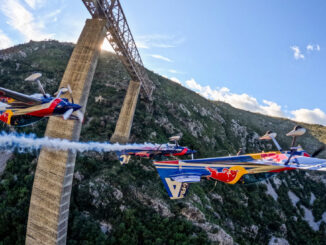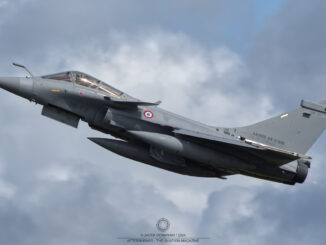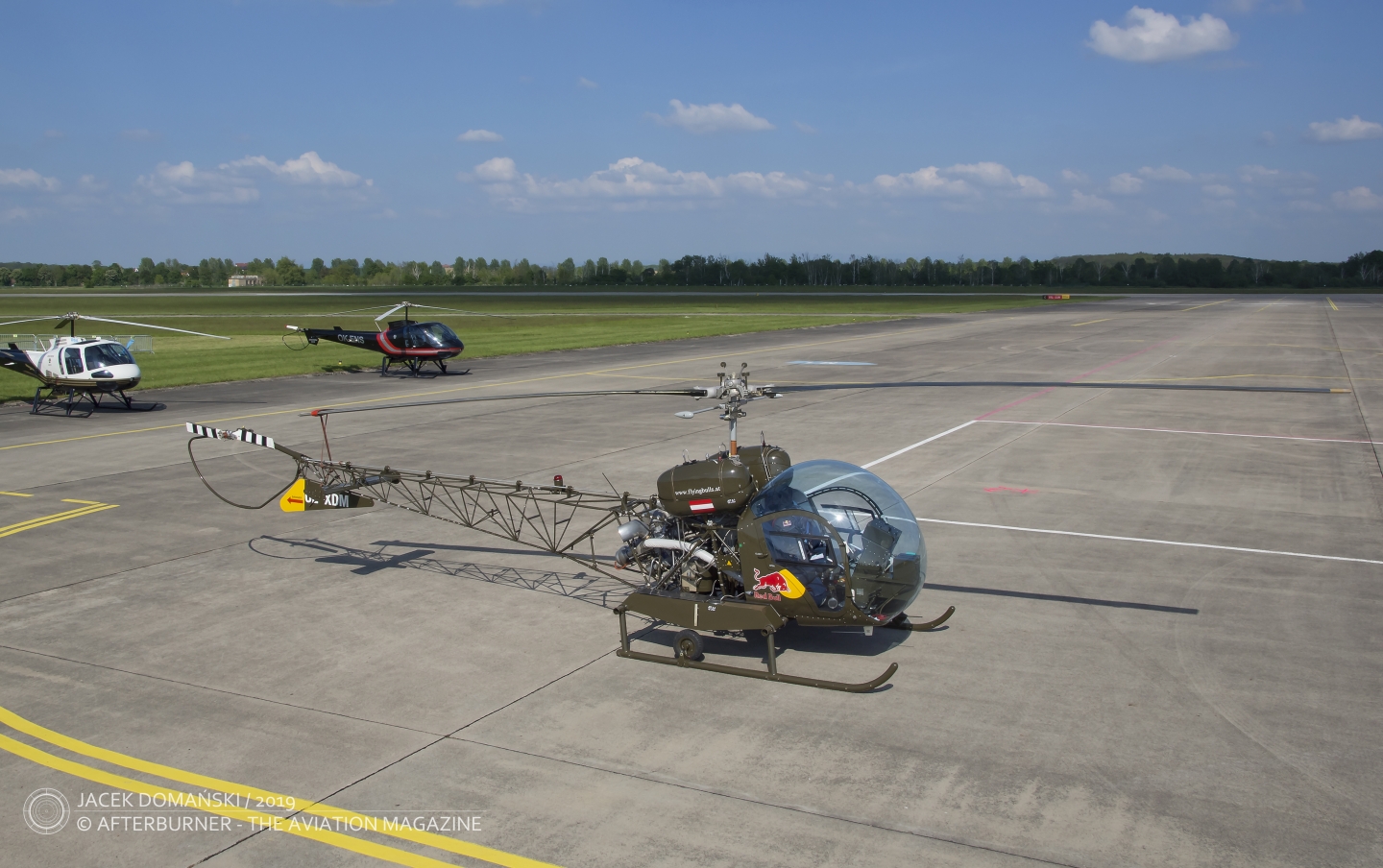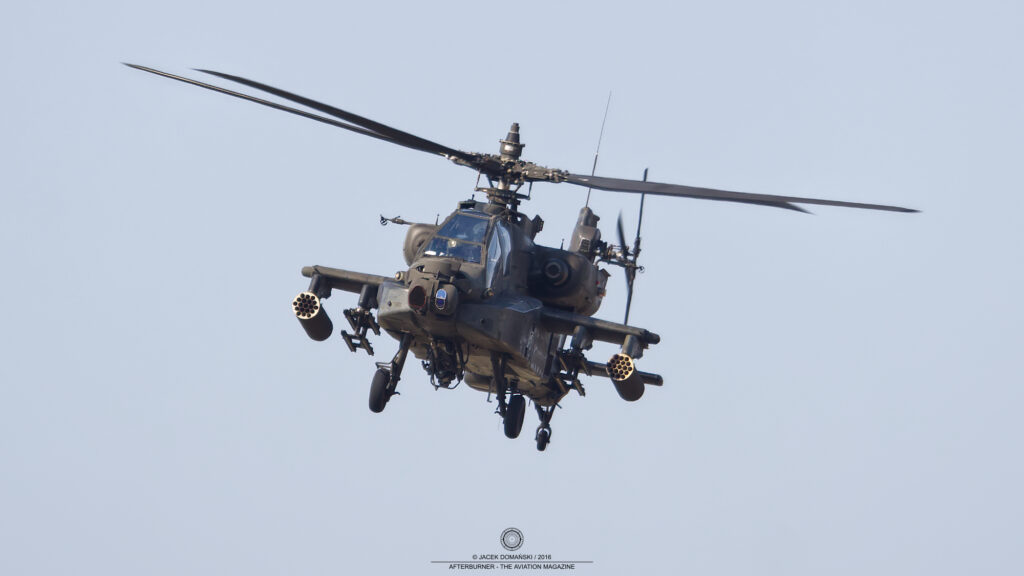 On 13th August 2024, the Polish Ministry of Defence announced the conclusion of agreement with the United States government, covering the purchase of ninety-six examples of Boeing AH-64E Apache Guardian helicopters, related equipment and logistics package. The contract, worth between 10 and 12 billion USD, was almost immediately named a ´purchase of the century´ by Polish media.
On 13th August 2024, the Polish Ministry of Defence announced the conclusion of agreement with the United States government, covering the purchase of ninety-six examples of Boeing AH-64E Apache Guardian helicopters, related equipment and logistics package. The contract, worth between 10 and 12 billion USD, was almost immediately named a ´purchase of the century´ by Polish media.
The origins of that purchase date back to 2013, when Polish military authorities announced the Kruk (English: raven) programme, aimed to purchase new attack helicopters. At that time, the Polish MoD, was looking for thirty-two rotorcraft to replace the country´s ageing fleet of Mil Mi-24 helicopters.
Although, over the years, several helicopter types were taken into account – mostly in response to lobbying activities of particular manufacturers – in fact, from the very beginning, the Polish military authorities were hoping for acquiring the Apache rotorcraft. However, budgetary constraints were the main issue and caused the programme seemed to last forever without any conclusion.
In 2022, significant change took place, caused by outbreak of the conflict in Ukraine. The United Right coalition government, which has been in power since 2015, launched the extensive defence procurements. Officially, those purchase initiatives were actuated by increased threat from Russia, however they were also part of the campaign for parliamentary elections in October 2023.
The aforementioned purchase initiatives included acquirement of main battle tanks, artillery and missile systems, frigates, MRAP vehicles, armoured personnel carriers and many others. Certainly, the ´shopping fever´ included also the aviation acquirements: Gladius reconnaissance and attack UAS (purchase contract signed in May of 2022), thirty-two AW149 rotorcraft (July 2022), forty-eight KAI F-50 light combat and training aircraft (September 2022) and two pre-owned Saab 340 AEW aeroplanes (July 2023).

In addition, in 2022 the Polish government in office noticeable accelerated the Kruk programme, at the same time increasing the number of helicopters to ninety-six examples. However, the US State Department approved the purchase only in August of 2023. Therefore, the contract could not be finalised before the parliamentary elections.
Nevertheless, the new government, formed by the Civic Coalition at the end of 2023, had no other choice than to continue with the Apache procurement. Any changes in the initial contract, including reduction in the number of helicopters to purchase, could cause not only a bad publicity but also a strong political tension, playing into the hands of opposition.
Therefore, works on the acquirement of the AH-64E were continued and recently concluded with a purchase of ninety-six helicopters, ninety-seven AN/ASQ-170 Modernized Target Acquisition and Designation Sights, thirty-seven AN/APG-78 fire-control radars, ammunition package including AGM-114R2 Hellfire anti-armour missiles, AGM-179A air-to-surface missiles, Stinger air-to-air missiles, as well as WGU-59/B guidance units. In addition, the Polish government signed two offset agreements with Boeing and General Electric, worth approximately 255 million USD, and covering maintenance and repair support for the purchased helicopters.
There is not much exaggeration in describing that deal as the helicopter purchase of the century. Although the AH-64 is already being operated by several countries all over the world – and has already become an icon of attack rotorcraft – the recently signed contract makes Poland the future second-biggest Apache operator in the world.
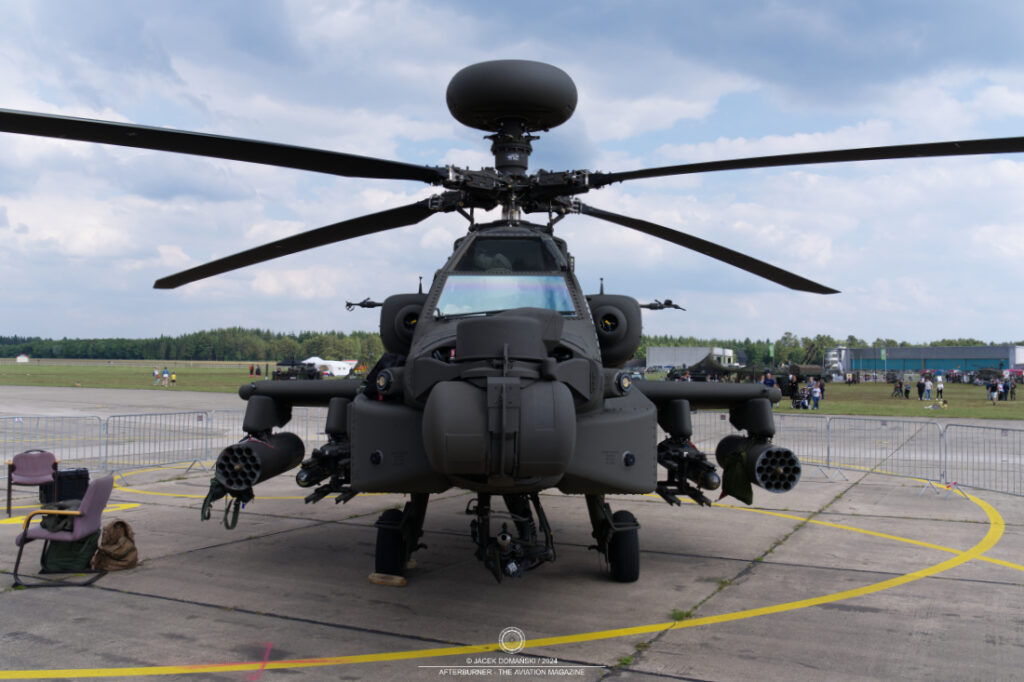
Currently, the US Army remains the major user of the AH-64, with approximately 800 examples of the rotorcraft in active service. The US fleet is followed by Kuwait and the United Kingdom, both with fifty Apache helicopters on duty or in order, and then Israel, Egypt and Saudi Arabia – each of them with almost fifty AH-64 on duty/ordered.
The Polish purchase of AH-64E, undoubtedly meaning a milestone for the country´s armed forces, has also raised some controversy. Most of them are related to ability to maintain such a huge helicopter fleet at high operational level. The Apache is not only known as high-maintenance rotorcraft but also requires highly trained and professional personnel.
The aforementioned sharp increase in Polish military procurement is not only a one-time expense. Primarily, it requires a larger military budget for decades to keep the new equipment operational and to secure the appropriate number of qualified personnel. Especially, that the list of the acquired armament mentioned above do not include the ongoing orders, placed prior to 2022 and for such budget-consuming items as the fleet of thirty-two F-35 Lighting II aircraft. On the other hand, one of current challenges the Polish armed forces are facing is shortage of trained staff.
It seems that neither previous nor current Polish government has any own ideas related to the country´s armed forces. All the authorities do is to build a smaller copy of the US forces, however without taking into account that Poland and the USA – as well as tasks and structure of their armed forces – are completely different.
While the US armed forces have a strong economic and technological background in the country, not mentioning the number of inhabitants, majority of the Polish purchases is made ´straight from the shelf´, with just minimum involvement of the local industry. Therefore, the army equipped with plenty of high-tech equipment and consuming the significant part of national budget, can easily be strong only in statistical data but on the other hand totally dependent on foreign deliveries and support.

It should be also pointed that currently the Polish helicopter force is a pure logistical nightmare. The Polish Air Force, the Army, the Navy and the Special Forces together operate approximately 250 rotorcraft of 12 different types and such a multitude of helicopter types within the country´s armed forces is really unique.
The Polish helicopter fleet includes a broad variety of aircraft, from the classic Cold War designs from the 1960s to modern variants of Leonardo and Sikorsky rotorcraft – Mil Mi-2, Mi-8, Mi-14, Mi-17 and Mi-24, PZL W-3 Sokól, SW-4 Puszczyk, Kaman SH-2G Seasprite, Leonardo AW101 and AW149, and Sikorsky S-70i Black Hawk.
Measures aimed at the fleet unification are slow and were the matter of political tensions. However, some of the oldest rotorcraft, such as the Mi-2, Mi-14 and SH-2G, are currently being retired from active duty and, in the nearest future, are going to be succeeded by AW101 and AW149. Soon, similar fate awaits the SW-4, W-3 and Mi-8/17. However, with the purchase of the AH-64E, the fleet of Polish military helicopters will be again enlarged with another, completely different, rotorcraft platform.
Although the air corps of the Polish Army still operates about fourteen examples of Mi-24 attack helicopters, their only weapon are the unguided S-5/S-8 missiles and the onboard heavy machine gun. The service life of post-Soviet guided anti-armour missiles has already expired in 2010 (or 2012, according to some sources).
According to the contract, the Apache rotorcraft are going to be delivered between 2028 and 2032. However, in order to provide for a rapid regaining of the combat ability, Poland will temporarily lease eight AH-64D from the US Army. Those helicopters are expected to be delivered at the turn of 2024 and 2025.
As stated by the Polish MoD, the leasing was one of the prerequisites to conclude the AH-64E contract.


